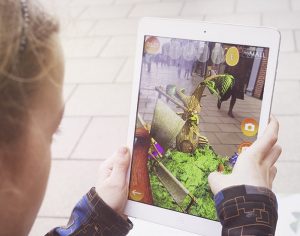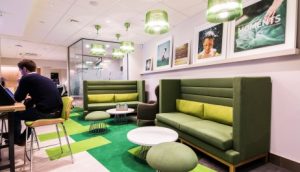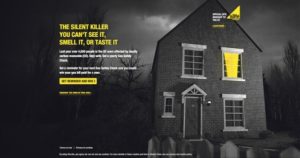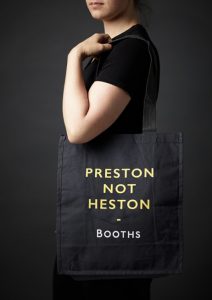
DBA Roundup
A roundup of industry expertise, exclusive resources, business support and tools for your design business.
 “Everyone knows designing a website around its users is essential,” but says chosen agency, Thompson Brand Partner’s Rachel Cook, “I’ve not seen anything like this early, entirely integrated user involvement in other client projects. Young people truly affected everything, from choosing their agency, leading and approving content, feeding into wireframes, voting on naming and terminology use, selecting the direction of the illustration style. It’s incredibly comprehensive.”
“Everyone knows designing a website around its users is essential,” but says chosen agency, Thompson Brand Partner’s Rachel Cook, “I’ve not seen anything like this early, entirely integrated user involvement in other client projects. Young people truly affected everything, from choosing their agency, leading and approving content, feeding into wireframes, voting on naming and terminology use, selecting the direction of the illustration style. It’s incredibly comprehensive.”
NHS Leeds South & East CCG and Thompson are to be applauded for their agile, user-centric approach and solution: MindMate’s design, content and language were shaped by young people all the way through, ensuring it deals with the most extreme sensitivities in a way that relates rather than patronises, makes sense of the help and support available, and critically engages its audience.
It’s a stunningly effective design: since launch, MindMate has smashed targets, inspired the sector, created an ambassador programme and become a template for other CCGs.
Physically winning the MindMate project involved an initial chemistry meeting with the client and a young person; the shortlisted agencies then had to carry out three practical workshops with young people before Thompson was chosen.
“Whilst this user-centric process undoubtedly means that more time and money will need to be spent on user engagement, it pays dividends by helping you to make smart decisions, quickly, and therefore cost-effectively,” points out Cook. “No matter how in touch we think we are with our audience, you can’t ever really second guess your users. We never failed to be surprised about what they felt worked and what didn’t.”
The process, she adds, can also help the client “to reassure stakeholders that they’re taking every precaution in ensuring the success of the project.”
 This level of deep understanding of the customer is helping one charity innovate in the retail space, enabling it to grow at a tough time for the charity sector. As a result, World Vision UK is trailblazing the way non-profit organisations think about face-to-face fundraising.
This level of deep understanding of the customer is helping one charity innovate in the retail space, enabling it to grow at a tough time for the charity sector. As a result, World Vision UK is trailblazing the way non-profit organisations think about face-to-face fundraising.
With the help of retail design consultancy The Yard Creative (TYC), the international children’s charity repositioned sponsor acquisitions away from the mass market and focused on a specific post-demographic consumer with a proven high lifetime value – (defined in summary as) affluent women aged 40-60.
“By putting the donor at the heart of the fundraising activity you begin to understand more than just the demographics,” says Steve James-Royle, co-founder of TYC, whose ‘Story Shop’ concept for the charity has helped deliver child sponsorship acquisitions 65% above target for the charity through its unique and rich customer experience.
Research had revealed the potential synergy between premium shopping centres and the desired target market, but high-end mega malls were refusing entry to World Vision due to the negative perception of charities’ traditional face-to-face fundraising.
 The insights TYC gained from the customer research identified the need for emotion in retail. “The target audience can see through the average marketing spin of everyday,” James-Royle says, “What they want is meaningful connections.”
The insights TYC gained from the customer research identified the need for emotion in retail. “The target audience can see through the average marketing spin of everyday,” James-Royle says, “What they want is meaningful connections.”
This focused TYC on the emotional connection needed to convert potential sponsors. They adopted a creative, retail minded approach, moving away from an intrusive fundraising experience that repels, to an enjoyable, immersive, technology driven, retail led experience that potential sponsors openly choose to engage with and TYC engaged the target audience throughout to understand how they would react to the design.
The Story Shop was born: designed as a mid-mall retail kiosk with the look of a specialist vintage store – customers can explore the interactive drawers at their own leisure to read the story of World Vision. The experience not only resonated deeply with the identified customer, but also gained the trust of wary landlords. “We involved them throughout the whole concept design process and enabled them to input,” says James-Royle, “They then did their bit to ensure World Vision was seen as a ‘retailer’ and that it would be good for their business.”
But there’s no resting on their laurels for either of these initiatives – both agencies are now involved in the next generations of the projects. “It’s vital that MindMate stays up to date, both as services and advice changes,” but also says Cook, “to keep talking to our users so we know what they need.”
No matter how much you think you know about your audience, it’s always worth digging deeper.
MindMate and The Story Shop are both winners in the 2017 DBA Design Effectiveness Awards.
Image credits: © Convisum | Dreamstime.com










Take Acro Aircraft Seating for example and their Superlight seat by Factorydesign. 
Start-up company, Acro recognised the need for creative input from the start: to turn manufacturing constraints into positives and to provide the differentiation that is vital in the airline world. The resulting seat designed by Factorydesign was the lightest in its class, provided real fuel savings to airlines, more comfort for passengers and a significant environmental advantage because of the reshoring of their manufacturing into the UK.
A decade on from their inception and five years since they won a DBA Design Effectiveness Award, Acro’s success is unquestionable. They’ve grown by over 100% year on year for the last four years, to take seventh place in the Sunday Times Virgin Fast Track 100 league table, which recognises Britain’s private companies with the fastest growing sales.
It was a fabulously effective piece of design and one that cemented the business’ long-term strategy. “Our new Series 6 and Premium Economy seats embrace the same approach as well as our philosophy of comfortable, robust, maintainable and lightweight seats”, says Acro’s Chief Executive, Chris Brady.
Of Acro’s success, Brady adds “it’s impossible to under-estimate the importance of the contribution design has made.”
 The long-term impact of design is not always financial. Design also has the power to change people’s lives and positively impact on society. Mental health services online hub, MindMate launched in October 2015 and through its uniquely agile and user-centric design, has helped transform support for thousands of young people with complex issues. It has become the ‘trusted friend’ young people turn to.
The long-term impact of design is not always financial. Design also has the power to change people’s lives and positively impact on society. Mental health services online hub, MindMate launched in October 2015 and through its uniquely agile and user-centric design, has helped transform support for thousands of young people with complex issues. It has become the ‘trusted friend’ young people turn to.
Having landed a DBA Design Effectiveness Award for smashing targets and inspiring a sector, a more recent snapshot from the last three months (February to April 2017) shows that MindMate is helping more young people than ever.
Users are up 56% on the same period last year and they’re coming back for more, with sessions up 41% too. Given the nature of the service, it’s particularly impressive to see that visitors aren’t just dipping into the site – MindMate deals with the mo st extreme sensitivities in a way that relates rather than patronises and young people are genuinely finding the content relevant and useful.
st extreme sensitivities in a way that relates rather than patronises and young people are genuinely finding the content relevant and useful.
At a time when a sweeping mental health crisis is reported amongst young people, Thompson Brand Partner’s and NHS Leeds South & East Clinical Commissioning Group’s (CCG) MindMate really is leading the way, with other NHS CCG’s now using it as a ‘best practice’ example to create similar services in other regions.
With the latest ‘What Clients Think Report’ finding that 88% of clients expect the business environment to be tougher this year than last year, it’s more important than ever to be able to convince on the commercial impact your design work can wield..
The DBA’s CEO Deborah Dawton sums it up: “There’s been an explosion in the desire to measure and evaluate, and a creative positioning alone is no longer enough. Brands need great creativity and design effectiveness.”
It’s not too late to start your Design Effectiveness Awards submissions to enter by the deadline on 30 June. A win will provide irrefutable evidence that your design work delivers results. It will prove to clients why they should invest in design – in your design – to help drive growth for their business over the long term.
Everything you need to support your entry for the 2018 Design Effectiveness Awards can be found in this downloadable entry pack. Read the pack and submit your entry before the deadline: 5pm GMT, 30 June 2017.










If you really boil it down to basics, this seems to be the year when retailers truly grasped the idea of using customer insights to inform their store designs. Almost all of our seminars about store design included an element of research into what customers wanted and how they use spaces and products, upon which important design decisions were based. This is an issue that retailers have paid lip service to for years, with varied degrees of commitment. Perhaps the tough current competition has convinced them they have to do it for real now, or perhaps they are finally getting to grips with the huge amount of data available. Either way, better shops should be the result.
We are also seeing a substantial move to incorporate new consumer technology in mainstream stores, and not just in big flagships. Some of it is very exciting (though some seems to be a solution looking for a problem). It isn’t necessarily the flashiest technology that will yield the biggest change in behaviour, and new technology can actually serve to highlight failings in traditional retail skills, such as service. So there will be a lot of interesting lessons over the next couple of years.
And retail storytelling seems to be better understood than it was. When the phrase was first introduced retailers took it very literally, commissioning displays about how trousers were stitched or oranges farmed. There is far more to storytelling than that, and it can be far more engaging than a lesson about manufacturing techniques or the struggle of the company founders.

It’s a sector, rather than a single business, but I think shopping centres are taking major steps towards making themselves more relevant to shoppers in the future. It’s a classic retail design challenge of keeping shoppers interested – and one that is also facing supermarkets and many other retailers which have large store estates.
And I was massively impressed by the entrants and supporters of the Retail Design Student Awards (sponsored by ITAB). The standards get higher every year, and it provides a fantastic start to some very promising careers. For established brands such as Adidas, Pret A Manger and Majestic Wines to set briefs for design students shows a real long-term commitment to design.

I liked the modular approach of the winning entry, Sensape, which combines AR, VR and customer recognition to create a sort of Minority Report in-store environment. It can be tailored for use by retailers or brands and – if the content shown is as creative as the technology – it could be immensely entertaining and personalised. I also liked some more conventional products, such as illuminated shelving from Pixalux, which neatly solves a very common problem.

I am almost always annoyed when I have to enter a bank, as they all seem to be designed to support the grey carpet industry and little else. So I was fascinated to hear how Lloyds Bank is redesigning branches as places that are better to dwell in – this is either going to become a dynamic sector over the next couple of years or we will all start banking online, all the time.
And it was a revelation that opening a SEAT car shop at Lakeside has led to a massive boost for conventional dealerships of the brand. I had expected the store to steal sales from dealers, not increase them.
Yes, more than ever. Designers thrive on solving problems, and with changing consumer habits and a bumpy economy they are going to have a lot of opportunities to do that.
Image credits: © Retail Design World











Now we have a very clear vision embedded in our team. We have been in steady growth since our inception in 2004, despite the worst recession since WW2. We’ve been profitable every year and annually re-invest a significant percentage of our profits in our company and our people. As a hybrid branding and digital consultancy, innovation is at the heart of what we do and the impact for our clients over the course could be collectively measured in the £100’s millions.
But let’s face it, we’re no Uber. We’ve solid growth, not stratospheric and we’ve not turned the world upside down with our unique approach to problem solving. But we are part of a significant movement. 99% of all businesses in the UK are SME’s – 5.4 million of them according to the government, with a combined turnover of £1.75 trillion. Let’s also keep in mind that this group of hard working, innovative entrepreneurs will play a large role in helping reach the UK’s ambitious export target of £1 trillion by 2020.
Now I’m reaching here but I’m betting that a good percentage of these SME’s rely on a specific type of institution to help keep the cash flowing as they grow. Institutions that I’d argue, given the economic climate and the pressures put on small growing businesses with export ambitions, are no longer fit for purpose. The Banks.
Here’s our wee story as an example. Once upon a time, we had a Bank Manager – no really! I name him here because he was great. A human being with experience, intelligence and understanding who was trusted to say yes as well as no. Sage advice lesson number one, “If you have more coming in than going out, you’ve a good business.” Milne Hogg, we salute you. Simple, to the point and never forgotten.
However, he was the last of a dying breed deemed surplus to requirements in banking. Next came the Relationship Managers – what an oxymoron! They came in once a year, smiled and ticked their boxes. If there was a difficult question, like ‘overdraft’, they would hastily exit to confer with head office at some juncture. Of course box ticking doesn’t have to be done by humans, so next up our fleetingly human relationship manager was replaced by an algorithm, literally.
While we’re on the subject of overdrafts, ours was declared extinct and replaced by good old Invoice Finance, or ‘business heroin’ as a close friend and financial adviser described it. Sold not on street corners, but in the comfort of your own boardroom. Like everything of course, the privilege of getting your hard earned early comes at a handsome price.
The final coup de grace came last year when we naively asked for help from the bank to help with new growth. Longer term strategic contracts from bigger global clients headquartered in USA and Europe led to elongated payment terms (90 – 120 days the norm). This in turn was stretching cashflow to the limit. All good problems to have, or so we thought! Time to call the bank and get in the experts, ‘surely they must be experiencing this issue with plenty of other ambitious customers?’
What do you think happened?
‘You guys are doing well, great product and clients, in growth and exporting, plus, security in place if any issues. Here’s a wad of cash, get what you need, go out and grow faster. You can rely on us.’
Afraid not!
‘All really good stuff guys, let’s extend your facility a bit to get you through and we can reassess once you’re through this tight period.’ No!
‘You need to take smaller contracts.’ No Irony. No joke! That was it.
 So, a group of companies (SME’s) with nearly £2 trillion worth of turnover are largely reliant on organisations that don’t have the vision, innovation or appetite for risk associated with ambitious companies in growth. Interestingly it’s actually the investment side of banks that continually make them their money, maybe we should be talking to them rather than the algorithm side of the machine? As institutions, tasked by government to help and support growth in the UK and further afield, they were in my opinion fitter for purpose 20 years ago. They have regressed, taking refuge in technology, and not for the better.
So, a group of companies (SME’s) with nearly £2 trillion worth of turnover are largely reliant on organisations that don’t have the vision, innovation or appetite for risk associated with ambitious companies in growth. Interestingly it’s actually the investment side of banks that continually make them their money, maybe we should be talking to them rather than the algorithm side of the machine? As institutions, tasked by government to help and support growth in the UK and further afield, they were in my opinion fitter for purpose 20 years ago. They have regressed, taking refuge in technology, and not for the better.
With Amazon in mind it makes me wonder what start-ups and SME’s could achieve if they were ably supported by a human centric, 21st century investment bank that had the vision to encourage growth through calculated risks, insight and innovation, in tandem with hard work, common sense and an informed eye on the bottom line. Surely it’s not that hard? Surely venture capital and crowd funding can’t be the only options?
I suspect it’d be good for business. Good for the global economy and good for everyone.
Image credits: © Hubenov | Dreamstime.com
Image credits: © Sofiaworld | Dreamstime.com
Image credits: © Nomadsoul1 | Dreamstime.com










Agencies sell ideas. Generally speaking the bigger the idea the better. Ideas are what make creatives tick. They involve change, transformation possibly, in the pursuit of delivering growth for the client. Agencies, in Ralph’s opinion, are often very good at selling the positive aspects of their ideas. The benefits can be huge and multiple, but too few agencies understand the fundamental difference between an agency selling ideas and a client looking for help.
The average client understands risk far better than they understand creativity. They don’t automatically see the potential of the big idea – they see the huge risk involved in the change. The design work (and cost associated with it) is usually just part of a larger project with much larger cost implications. The risk always sits with the client.
Ralph argues that this goes to the heart of why agencies struggle to grow. They fail to mitigate the risk – in fact it is often ignored completely. The strategy very often concentrates on being enthusiastic about the positives in the hope that the client will be carried along on the wave of optimism.
A common response from an agency whose big idea has been rejected by a client is “they just didn’t get it”. Actually, they just didn’t believe it. They saw the risk, and the agency didn’t address it. They did not explain the risks as they saw them and how they could be dealt with if they arose.
Don’t let risk be the elephant in the room. Address it head on. Agencies don’t simply get ideas rejected because the client didn’t like them – they get them rejected because they were considered too risky. “Not addressing risk,” says Ralph, “is irresponsible selling, and it will stunt your growth.”
Image credits: © Craigwphoto | Dreamstime.com










Alice Whiteley of Yawn, is a long-term client. Whilst juggling her busy consultancy and raising three children, she’d been looking for some feel-good nightwear to help her relax. Noticing that department stores typically sold either slinky stuff or basics, she decided to create a brand full of comfort and character. After two meetings where we shared research, we agreed it was interesting.
 Yawn sometimes feels like a very old-fashioned business: it makes lots of things and then tries to sell them. Unless you have a resource to reduce the upfront cost of production and distribution, starting a clothing brand is financially challenging. Rather than burden the business with additional branding and marketing costs from the outset, we could all see that partnership was an opportunity to speed things up through a different way of working.
Yawn sometimes feels like a very old-fashioned business: it makes lots of things and then tries to sell them. Unless you have a resource to reduce the upfront cost of production and distribution, starting a clothing brand is financially challenging. Rather than burden the business with additional branding and marketing costs from the outset, we could all see that partnership was an opportunity to speed things up through a different way of working.
Lots of reasons. Purely as a project, the nightwear market is huge and growing, so the idea felt sound. Whilst we’d  never designed for fashion before, we have strong in-house illustration skills, so the print aspect was something we felt excited to try. We knew Alice well and trusted her. And we wanted to explore other ways for a design business to grow, putting our money where our mouth is and creating our own retail brand.
never designed for fashion before, we have strong in-house illustration skills, so the print aspect was something we felt excited to try. We knew Alice well and trusted her. And we wanted to explore other ways for a design business to grow, putting our money where our mouth is and creating our own retail brand.
We were clear on the risk and agreed on budgets. Our only concern was how strictly to define scope of work. Rather than nitpick or constantly review, we agreed on a larger stake in return for flexibility. We’ve made a commitment to Yawn – it’s our brand, so we’re there whenever it needs us.
This is only our third year of trading, so direct financial reward is a long way off! However, from our side, there have been two clear benefits. Firstly, by working on our own brand and sales assets, our team have become more aware of design as a commercial tool. Secondly, our fee-paying clients are interested and impressed. They like that we believe in and what we do.
For Yawn, the biggest benefit has been a high quality brand from day one. This has set us apart from other startups, securing international stockists, strong e-commerce and interesting brand partnerships. Also, life can be lonely as a startup. By moving into our studio (last year), Yawn feels part of a bigger team. We get things done quickly and it’s fun to be surrounded by different disciplines.
A heavily qualified yes. Generally, all advice comes back to treating your investment via design in the same way you would cash.
Image credits: © Sam Robinson











Set-up every project as a potential DEA entry. So by the time you get your results, you’ll already have a rough entry #dbaDEA
Good entries tell a story #dbaDEA
Each DEA entry is judged on its own merit, you’re being measured on what you’ve written in your own case study #dbaDEA
Context is a key part of a design effectiveness awards entry. Without it the judges find it difficult to understand the measures #dbaDEA
Market context gives your case study the credibility and lets the results shine through #dbaDEA
What are the other influencing factors? Without clarity around this area you leave your case study open to interpretation #dbaDEA
Give yourself enough time to prove that it’s the design that’s driven your success, not other factors #dbaDEA
The #dbaDEA judges are a panel of business experts, they’re primed and ready to analyse your business case http://bit.ly/1UGx2y5
The industry you’re in isn’t an issue, a CMO in finance might judge a piece of industrial design work – it’s about the business case #dbaDEA
Judges want to see the agency/client partnership through a holistic approach to story telling in your case study #dbaDEA
Words of wisdom from Ian of creative agency @ThompsonBP @HarrogateSpring #dbaDEA
On creating successful #dbaDEA entries @theyardcreative says: designer led research adds great value to the end product
Advice from Paul of @allotmentbrand: “Focus and agree on hard measures of what success looks like right from the start” #dbaDEA

Effective design is for business survival, not just a pretty trophy #dbaDEA
 What to measure?
What to measure?Download this guide for: tips on evaluating data on design effectiveness. What statistics should you gather for different types of projects?
 Effectiveness case studies
Effectiveness case studiesRead the case studies of previous DEA winners. These will illustrate design effectiveness through the project objectives, evaluate the outcome against those objectives, and demonstrate that design made a specific contribution to the project’s commercial success.
Hone your own case study, read the examples.










 The ‘cleanyourhands’ campaign wiped away the competition taking the Grand Prix at the 2005 DBA Design Effectiveness Awards.
The ‘cleanyourhands’ campaign wiped away the competition taking the Grand Prix at the 2005 DBA Design Effectiveness Awards.
The campaign was the first of its kind, aiming to improve hand hygiene on a national level across the NHS, in order to reduce incidence of avoidable infections such as MRSA. The objective was to make sure NHS staff cleaned their hands correctly at the right time in the right place, preventing potentially life-threatening healthcare associated infections.
Research had shown that hospital staff (on average) were cleaning their hands less than half the number of times they should. With healthcare associated infection causing at least 5,000 deaths a year and 30% of infections preventable, this poor level of hand hygiene was placing patients’ lives in danger.
The award winning ‘cleanyourhands’ campaign, with its clear and simple messages and bold, eye-catching designs, initially piloted in six acute trusts and delivered a massive 241% increase in hand hygiene compliance in hospitals by engaging and empowering patients to take an unprecedented level of voluntary involvement in improving hospital hygiene and in changing the hand hygiene behaviour of healthcare staff.
Following the National Patient Safety Agency and Lucid Design’s ‘cleanyourhands’ pilot campaign, NHS trusts across England and Wales signed up.

Brand and communications agency The Team, worked with the Gas Safe Register to create a life-saving campaign that went on to win Gold at the 2014 DBA Design Effectiveness Awards.
Following checks on the safety of gas appliances in 1,616 homes in the North West of England, the Gas Safe Register found that nearly one in five were unsafe and posed an immediate threat – potentially resulting in gas explosions, fires, escapes or CO poisoning if left unchecked.
Too many people were failing to have their gas appliances checked. Gas Safe Register needed a high-profile campaign to assert their role in helping change the behaviour of people towards gas safety for good.
But how do you make an invisible, odourless and tasteless threat live in the mind of the target audience?
It was not a simple design challenge presented to agency The Team, who had to get into the heads of ‘a cynical and complacent audience’ set, and then convince them to do something about it. They needed to motivate the audience to question their own complacent behaviour.
Using the single-minded, emotive idea of ‘The Silent Killer’ enabled The Team to create a ‘suspense thriller theme’ that  worked across all creative assets. Every design asset was carefully crafted from this central idea. The Silent Killer is an enduring solution that has found a way into the hearts and minds of a previously dismissive audience.
worked across all creative assets. Every design asset was carefully crafted from this central idea. The Silent Killer is an enduring solution that has found a way into the hearts and minds of a previously dismissive audience.
The campaign hit home: in the period June-September 2012, only 6% of the target audience (dismissive, skeptic households in the NW of England) claimed they had had their gas appliances checked. This increased to 18% in just five months following the campaign – a threefold increase, and a dramatic change in consumer behaviour.
This equates to an additional 53,424 households protecting themselves from the devastating impact of unsafe gas work and appliances – and (with one in five inspections on average identifying unsafe gas works or appliances) in effect translates to 10,600 households that were potentially at immediate risk of harm, motivated to get their home’s gas safety checked as a result of The Silent Killer campaign.
Image credits: © Nulinukas | Dreamstime.com











New legislation, introduced in 2015, saw shoppers in large stores charged 5p for every plastic carrier bag they used. It was something of a headache for Booths, as for other multiple retailers, throwing up compliance, tax and customer communications issues that the business could well do without.
As Booths’ design partner Smith&+Village says, “Gnarly issues like this often prove to be the grit in the oyster that makes a pearl of an idea.”
Their solution to this challenge for Booths is a classic example of how creative design thinking can turn a problem into something unexpectedly successful: how effective design can be a money-spinner.
The fabric bags they designed in response have attitude, are loved by consumers and have become true icons of the brand. The five designs combine simple typography with Northern wit, turning humble carriers into walking billboards that owners use day-in, day-out. Customers are now promoting the brand in ways Booths’ minimal advertising budget couldn’t have stretched to. Although this is a path well trodden by high-end retailers, it was not one that more every day retailers like supermarkets had ever ventured down in a deliberate way.
Smith&+Village’s simple idea to implement that strategy, to introduce fabric bags that become icons of the Booths brand, rather than just things to put shopping in, has had a remarkable effect on the perception of the brand and on its bottom line.
Sales of their fabric bags are up 510% since their introduction, generating sales worth over £230,000 in 12 months and essentially creating a new product category, where there had not previously been one. For every £1 invested in design, £9 has been received back in sales so far.
Read the DBA Design Effectiveness Award winning case study in full here.









